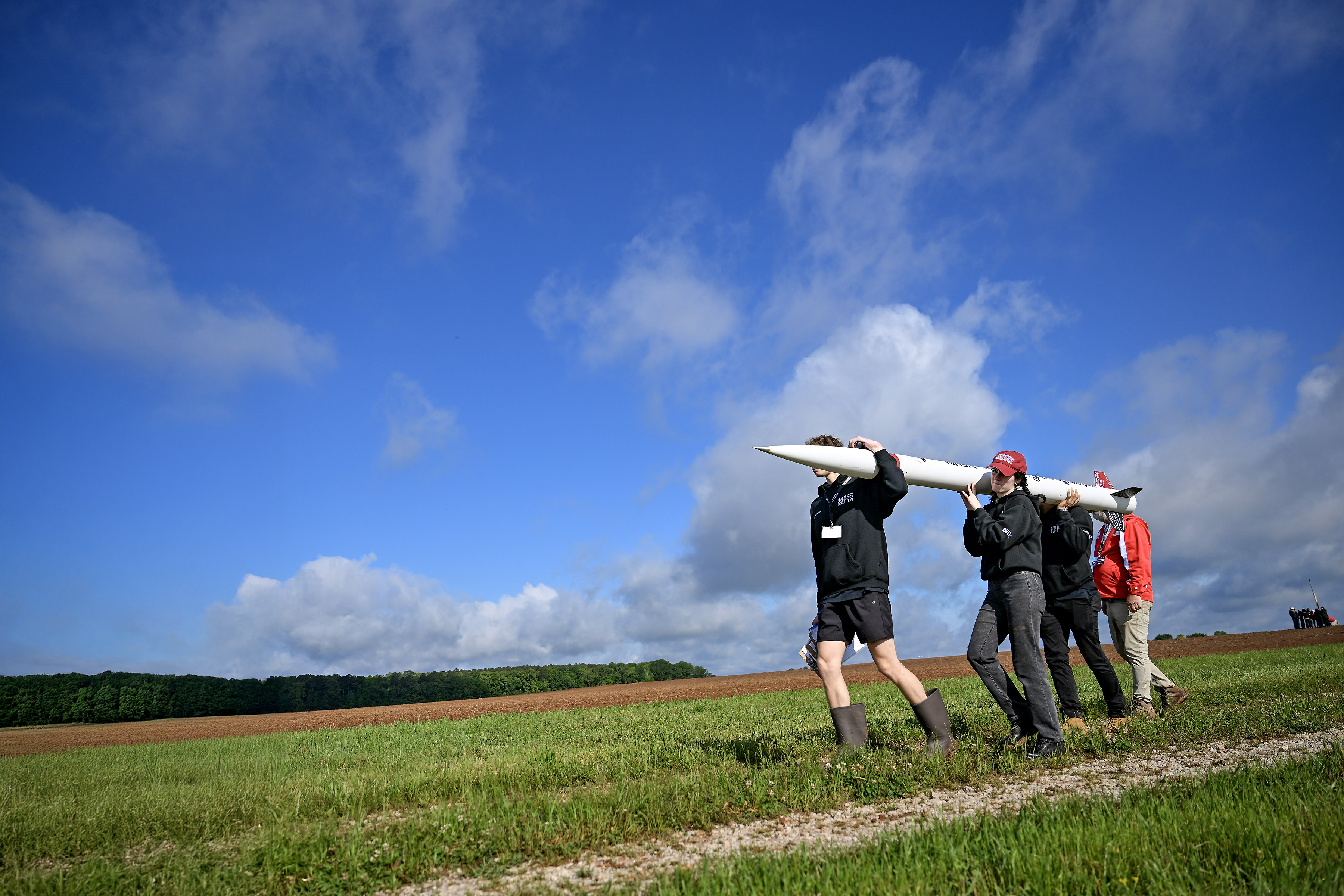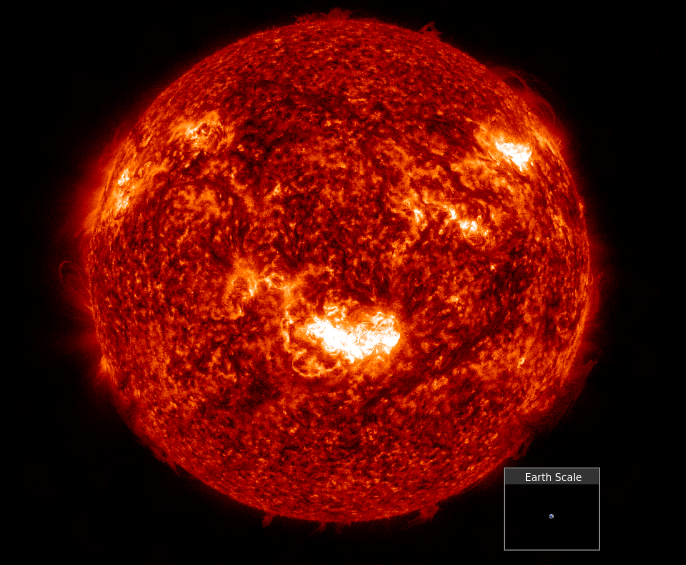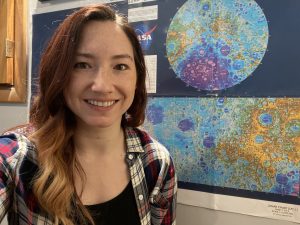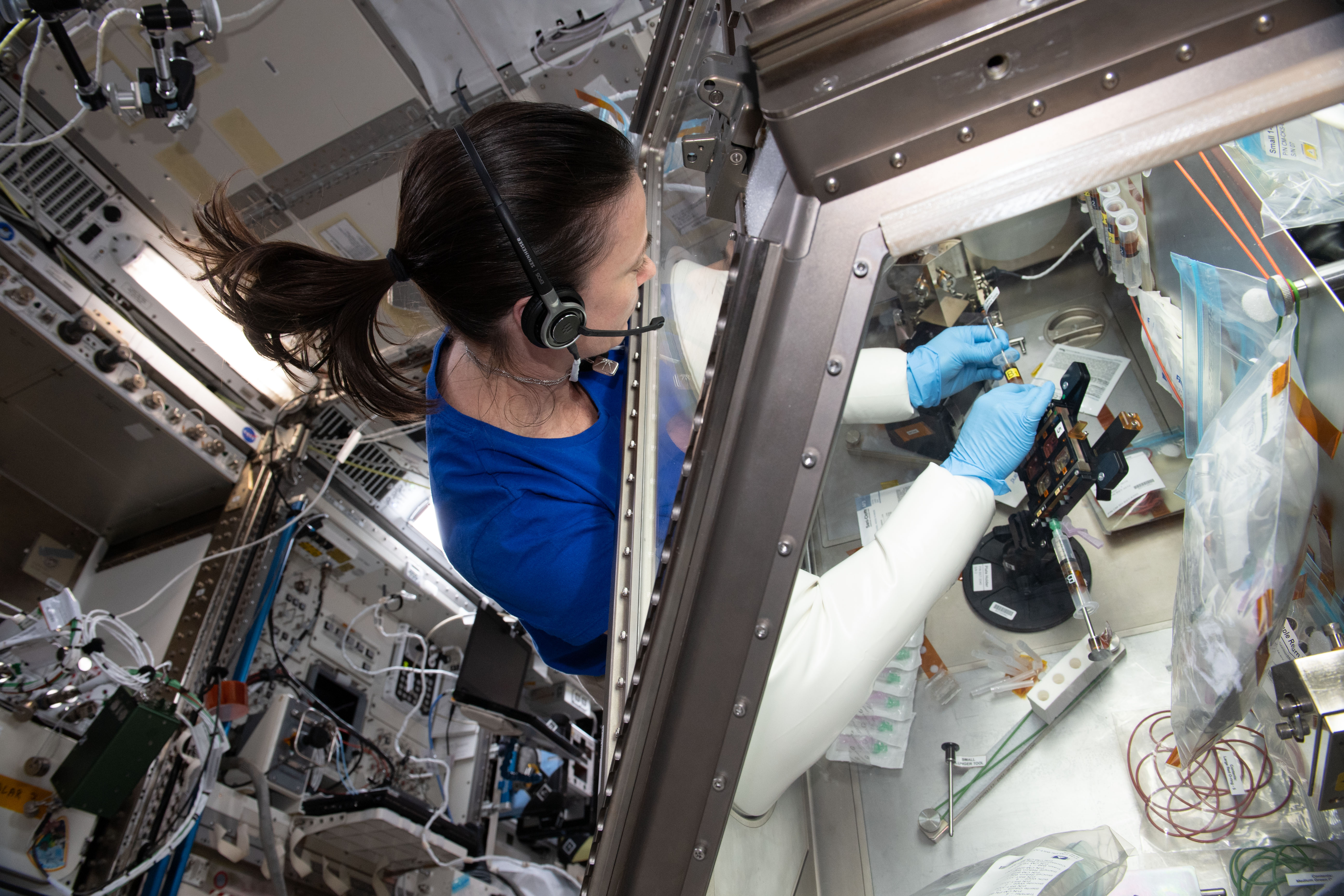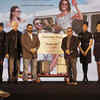Christine Knudson Uses Earthly Experience to Study Martian Geology
Geologist Christine Knudson works with the Curiosity rover to explore Mars — from about 250 million miles away.

Name: Christine Knudson
Title: Geologist
Formal Job Classification: Research Assistant
Organization: Planetary Environments Laboratory, Science Directorate (Code 699)

What do you do and what is most interesting about your role here at Goddard?
I am a geologist doing both laboratory and field work, primarily focusing on Mars analog research. I work on the Curiosity rover as part of the Sample Analysis at Mars (SAM) instrument team.
Why did you become a geologist?
As a child, I always loved being outside and I was really interested in all things related to the Earth. In college, I figured out that I wanted to be a geologist after taking an introduction to geology course. I wanted to learn more about the Earth and its interior, specifically volcanism.
What is your educational background?
In 2012, I received a B.S. in geology and environmental geoscience from Northern Illinois University. In August 2012, the same month that Curiosity landed on Mars, I started graduate school and in December 2014, I received a M.S. in geology from the same university. I focused on igneous geochemistry, investigating the pre-eruptive water contents of a Guatemalan volcano.
Why did you come to Goddard?
I came to Goddard in February 2015 to perform laboratory analyses of Mars analog materials, rock and mineral samples, from Earth, that the Curiosity rover and spectral orbiters have also identified on Mars. It is very exciting to be part of the rover team and to be involved in an active Mars mission.
What is a highlight of your work as a laboratory geologist doing Mars analog research?
Using laboratory analyses to interpret data we are getting back from Curiosity is incredibly exciting! I perform evolved gas analysis to replicate the analyses that the SAM instrument does on the rover. Curiosity scoops sand or drills into the rocks at stops along its drive through Gale Crater on Mars, then dumps the material into a small cup within the SAM instrument inside the rover. The rock is heated in a small oven to about 900 C [about 1650 F], and the instrument captures the gases that are released from the sample as it is heated. SAM uses a mass spectrometer to identify the different gases, and that tells us about the minerals that make up the rock.
We do the same analyses on rocks and minerals in our lab to compare to the SAM analyses. The other instruments on Curiosity also aid in the identification of the rocks, minerals, and elements present in this location on the Martian surface.
I also serve as a payload downlink lead for the SAM instrument. I check on the science and engineering data after we perform an experiment on Mars. On the days I’m on shift, I check to make sure that our science experiments finish without any problems, and that the instrument is “healthy,” so that the rover can continue driving and begin the science that is planned for the next sol.
On days when we’re downlinking science data and I’m on shift, I am one of the first people to see data from an experiment done on Mars!
What is some of the coolest field work you have done?
I have done Mars analog field work in New Mexico, Hawaii, and Iceland. The field work in Hawaii is exciting because one of our field sites was inside a lava tube on Mauna Loa. We expect that there are lava tubes on Mars, and we know that the interior of the tubes would likely be better shielded from solar radiation, which might allow for the preservation of organic markers. Scientifically, we’re interested in characterizing the rocks and minerals inside lava tubes to understand how the interior differs from the surface over time and to investigate differences in elemental availability as an accessible resource for potential life. Learning about these processes on Earth helps us understand what might be possible on Mars too.

I use handheld versions of laboratory instruments, some of which were miniaturized and made to fit on the Curiosity rover, to take in situ geochemical measurements — to learn what elements are present in the rocks and in what quantities. We also collect samples to analyze in the laboratory.
I also love Hawaii because the island is volcanically active. Hawaii Volcano National Park is incredible! A couple years ago, I was able to see the lava lake from an ongoing eruption within the crater of Kīlauea volcano. The best time to see the lava lake is at night because the glowing lava is visible from multiple park overlooks.
As a Mars geologist, what most fascinates you about the Curiosity rover?
When Curiosity landed, it was the largest rover NASA had ever sent to Mars: It’s about the size of a small SUV, so landing it safely was quite the feat! Curiosity also has some of the first science instruments ever made to operate on another planet, and we’ve learned SO much from those analyses.
Curiosity and the other rovers are sort of like robotic geologists exploring Mars. Working with the Curiosity rover allows scientists to do geology on Mars — from about 250 million miles away! Earth analogs help us to understand what we are seeing on Mars, since that “field site” is so incredibly far away and inaccessible to humans at this time.
What do you do for fun?
I spend most of my free time with my husband and two small children. We enjoy family hikes, gardening, and both my boys love being outside as much as I do.
I also enjoy yoga, and I crochet: I make hats, blankets, and I’m starting a sweater soon.
What is your “six-word memoir”? A six-word memoir describes something in just six words.
Nature-lover. Mom. Geologist. Cat-enthusiast. Curious. Snack-fiend.
By Elizabeth M. Jarrell
NASA’s Goddard Space Flight Center, Greenbelt, Md.
Conversations With Goddard is a collection of Q&A profiles highlighting the breadth and depth of NASA’s Goddard Space Flight Center’s talented and diverse workforce. The Conversations have been published twice a month on average since May 2011. Read past editions on Goddard’s “Our People” webpage.
Share
Details
Related Terms
What's Your Reaction?



















.jpg?#)












